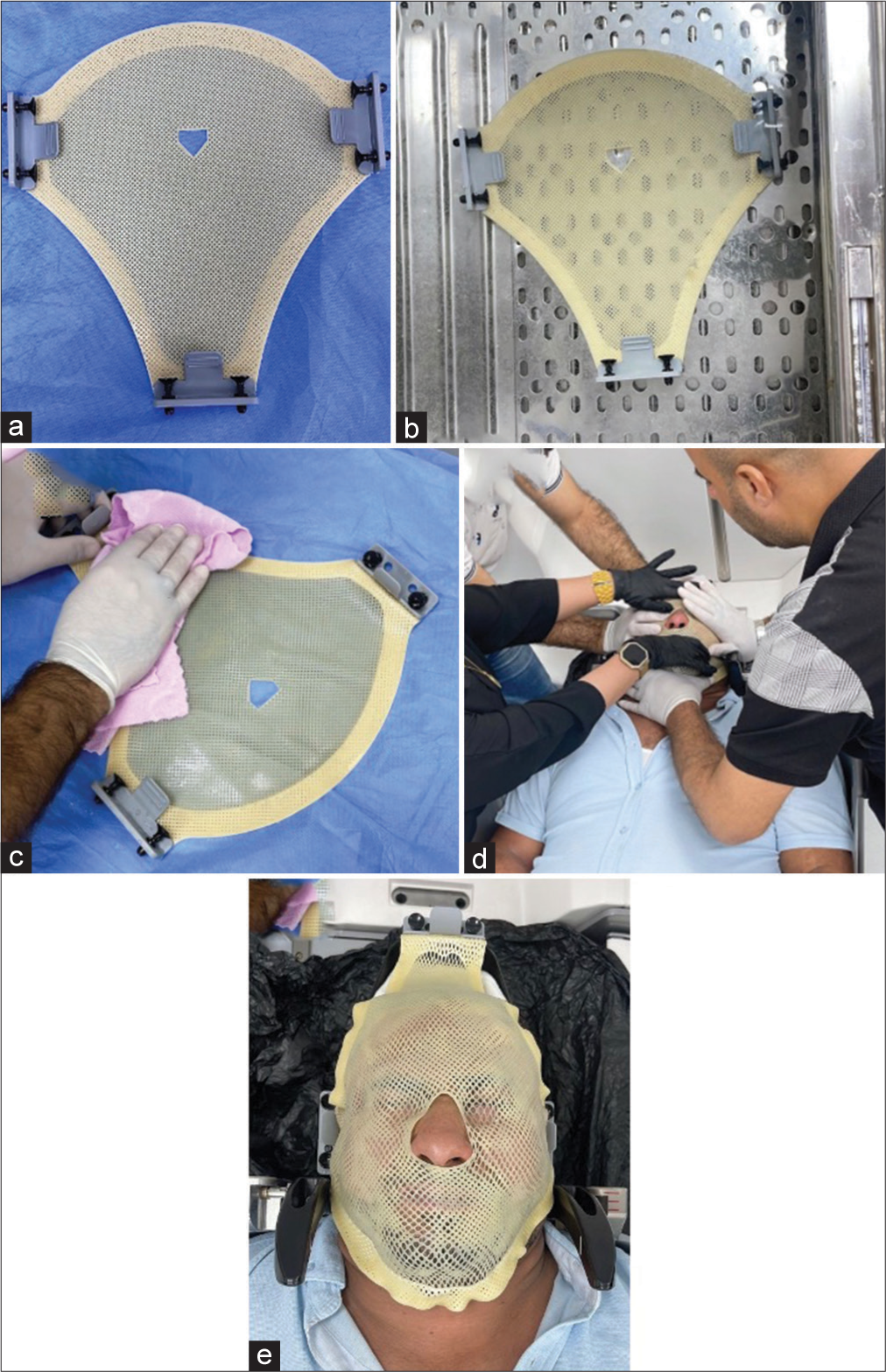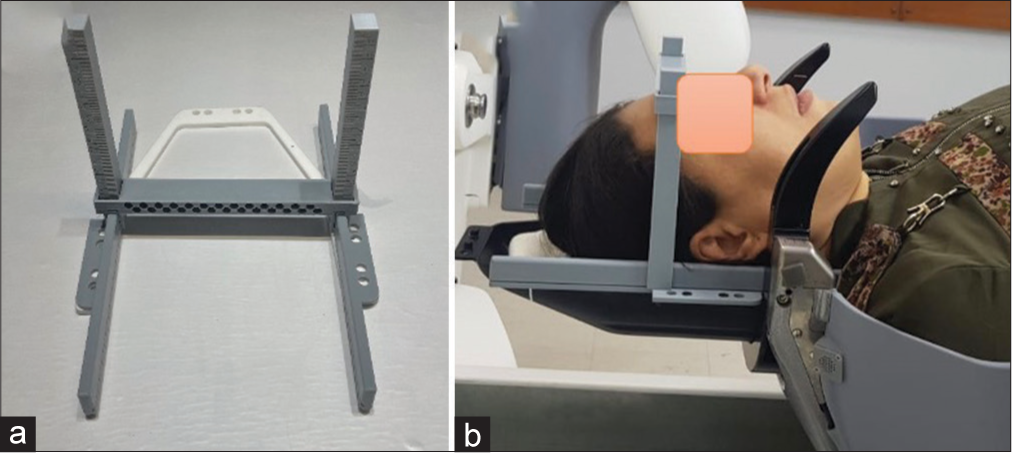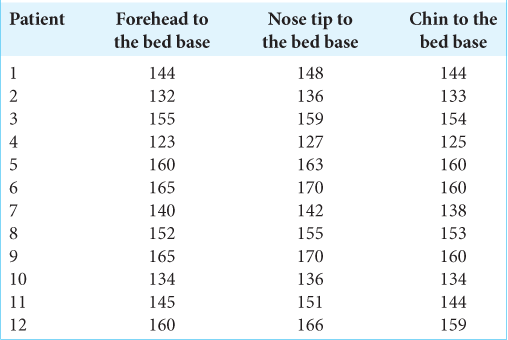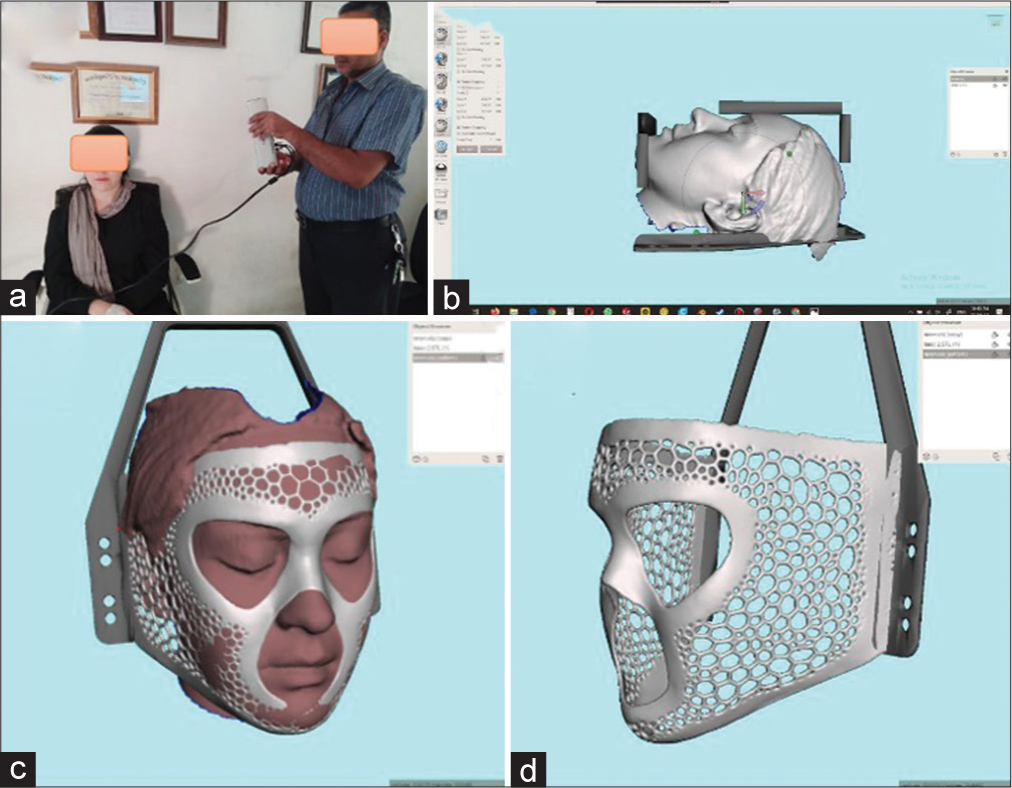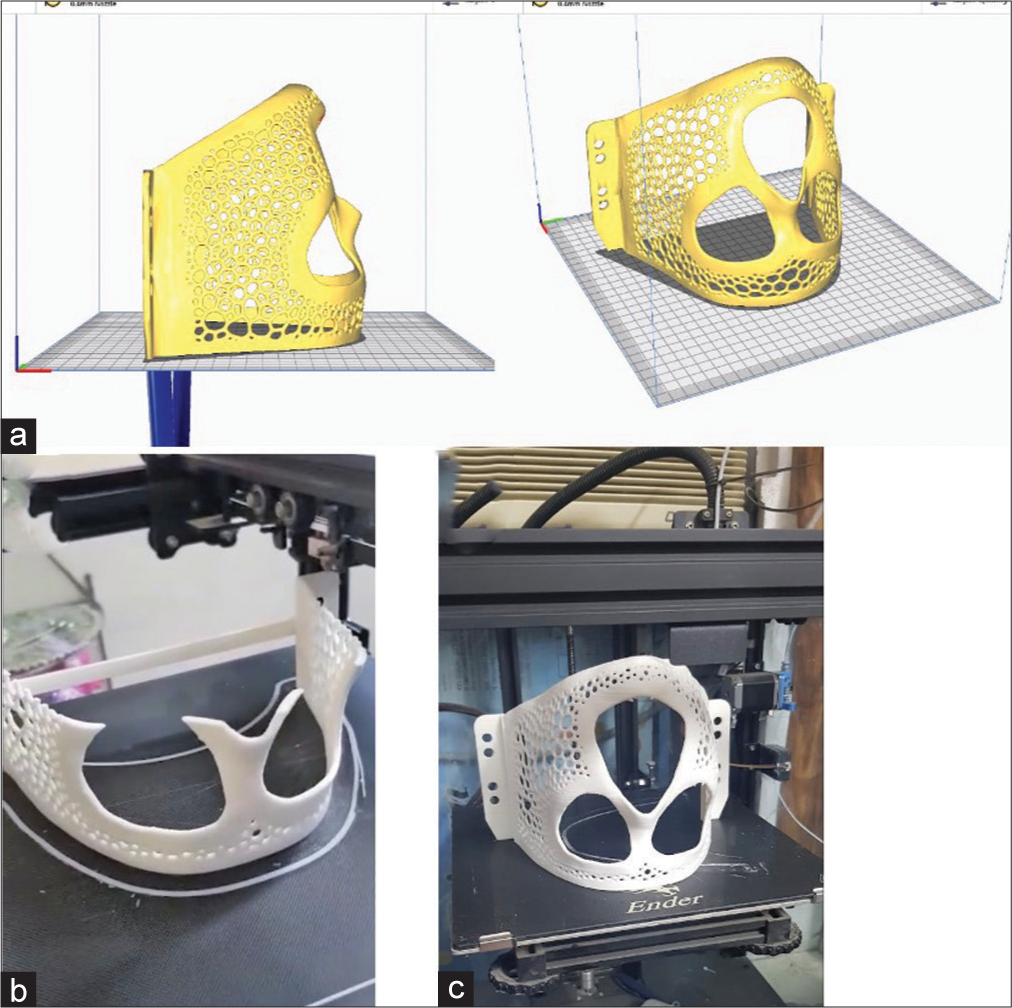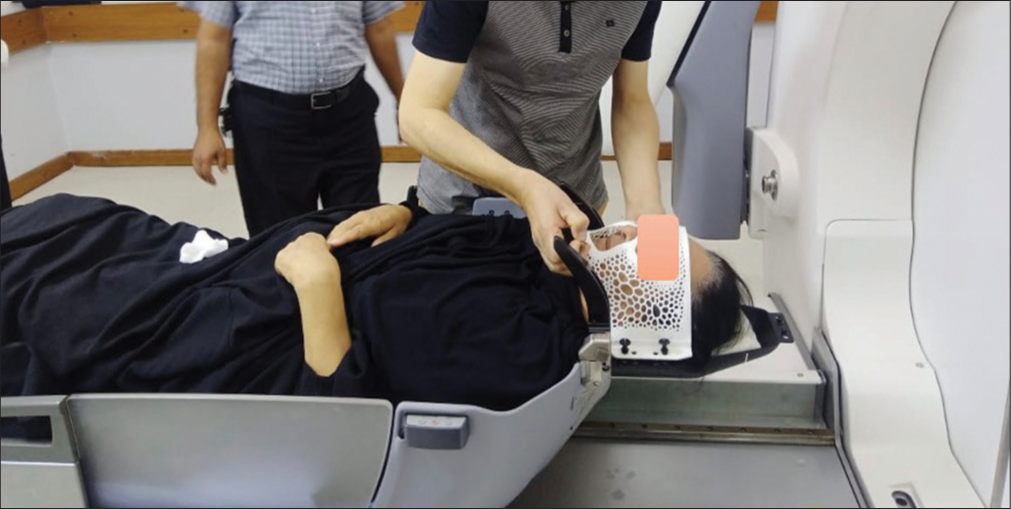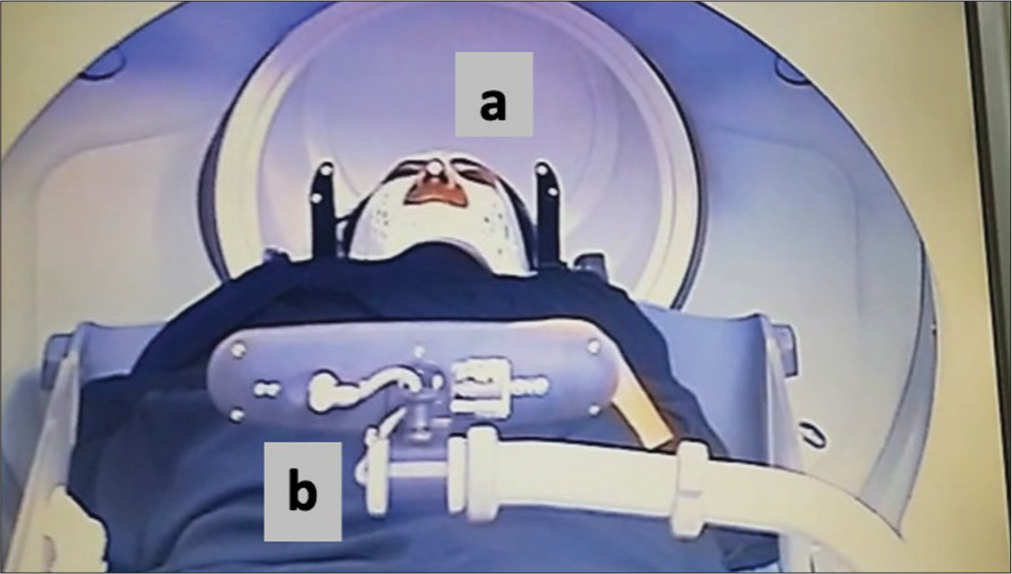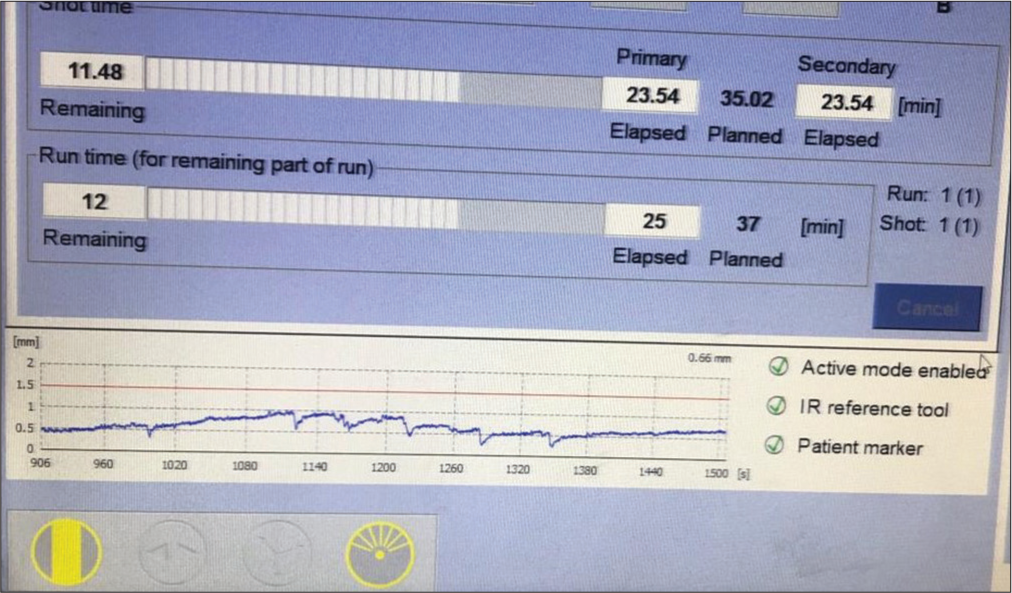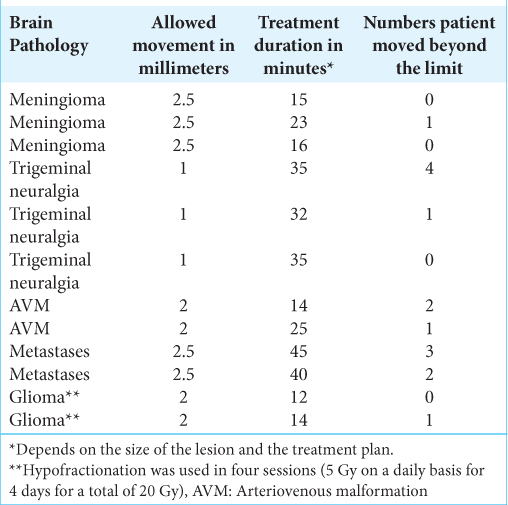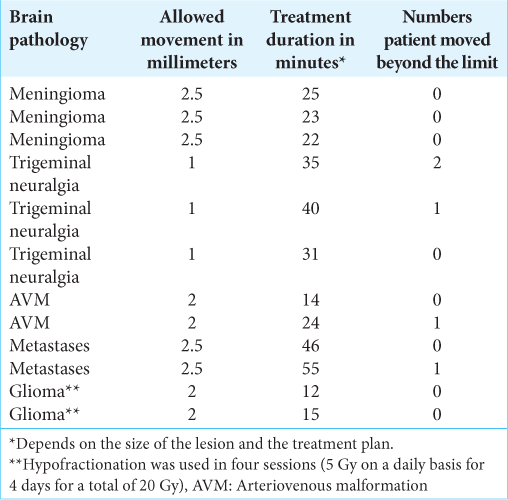- Department of Neurosurgery, College of Medicine, University of Baghdad, Baghdad, Iraq.
- Department of Medical Physics, College of Medicine, Al-Mustansyria University, Baghdad, Iraq.
Correspondence Address:
Moneer K. Faraj, Department of Neurosurgery, College of Medicine, University of Baghdad, Baghdad, Iraq.
DOI:10.25259/SNI_1053_2022
Copyright: © 2023 Surgical Neurology International This is an open-access article distributed under the terms of the Creative Commons Attribution-Non Commercial-Share Alike 4.0 License, which allows others to remix, transform, and build upon the work non-commercially, as long as the author is credited and the new creations are licensed under the identical terms.How to cite this article: Moneer K. Faraj1, Mustafa Salih Al-Musawi2, Tabarek Ali Abdulameer2. Design and manufacturing of a head mask for fixation in stereotactic radiosurgery by the Gamma Knife® Icon™. 02-Jun-2023;14:188
How to cite this URL: Moneer K. Faraj1, Mustafa Salih Al-Musawi2, Tabarek Ali Abdulameer2. Design and manufacturing of a head mask for fixation in stereotactic radiosurgery by the Gamma Knife® Icon™. 02-Jun-2023;14:188. Available from: https://surgicalneurologyint.com/?post_type=surgicalint_articles&p=12348
Abstract
Background: This study evaluates an alternative to the classical method of head fixation during Gamma Knife radiosurgery using a Leksell head frame. In the Gamma Knife® Icon™ model, a new method of head fixation is used by utilizing a thermal molded polymer mask that takes the shape of the patient’s head before fixing the head to the table. However, this mask is for single use and quite expensive.
Methods: We describe a new, very economical method to fix the head of the patient during radiosurgery. We used commercial, quite cheap material [polylactic acid (PLA)] plastic and made a 3D printing model for the patient’s face, taking special measurements to put this mask and fix it on the Gamma Knife. The actual material cost is only $4 (100 times less than the original mask cost).
Results: The new mask efficiency was tested using the movement checker software, the same one used to measure the efficiency of the original mask.
Conclusion: The newly designed and manufactured mask is quite effective for use with the Gamma Knife® Icon™, with a much lower cost, and it can be manufactured locally.
Keywords: Gamma Knife® Icon™, Head fixation, Mask
INTRODUCTION
Gamma Knife radiosurgery has been utilized for decades to treat different brain lesions such as benign and malignant tumors, some functional disorders such as trigeminal neuralgia, focal epilepsy, psychiatric conditions, and even vascular malformations.[
Different generations of machines have been developed. In 2016, the most recent version, named Gamma Knife® Icon™, came with a new way of fixation of the head during treatment.[
A mask made from thermal-sensitive polymers is used to fix the head with a Gamma Knife bed.[
The gamma-ray has very high penetration; even lead aprons do not offer adequate protection. The only way of protection is from the same tungsten alloy that covers the cobalt source of the machine. Therefore, any head frame, whether made of plastic or aluminum (as with the classical Leksell frame), will not affect the amount of radiation reaching the target.[
The mask must be prepared in a water bath of 70°C for 10 min, then dried with a towel and molded to take the shape of the face of the patient, and then fixed with a special plastic clip on the Gamma Knife bed. We usually wait 10 min until the mask material solidifies.
This mask is single-use, and it is somewhat quite expensive [
MATERIALS AND METHODS
We need the patient to come at least 1 day before treatment.
The patient’s head is laid on the Gamma Knife bed. We printed a special ruler to check the proper measurements for the distances from the base of the Gamma Knife to the forehead, the nose’s tip, and the patient’s chin in millimeters [
A scanner obtains an image of the patient’s head. This image is processed using Meshmixer software. Then, it is converted into a mask by removing unneeded parts of the face and making the proper additions depending on the measures taken for the face parts from the Gamma Knife bed [
The mask printed with INDOOR 6 3D Printer® using the Ultra mix Cura Software. We print a 3-mm thickness mask from PLA without needing any support layer, and the process takes 4.5 h [
We check the movement of the head during treatment by putting a special indicator on the patient’s nose and utilizing two infrared cameras on the footbed of the Gamma Knife. These cameras will check if there is any movement of the nose. We allow between 0.5 and 2 mm of action according to the size of the mass treated [
RESULTS
The new mask was used for 12 patients with different brain lesions. All the treatments successfully ended. We compared our results with the other 12 patients using the conventional mask [
We chose the same lesions and the same distance of movement allowed. We calculated how often we had to stop the treatment because the patient’s head moved beyond the permitted distance. The patients with the new mask had less need to repeat the treatment; this is obvious because the new mask is designed to fit exactly the anatomical shape of the patient.
There was no complaint or discomfort from the new mask. It just fits their head measurements. On the contrary, some patients were uncomfortable with the physical molding by hand during the day of treatment, and some complained of the heat of the mask; these other issues, besides the cost, compelled us to think of an alternative solution.
Locally, there is no insurance coverage for the Gamma Knife treatment. It is paid for by the patient. The difference in the cost means a lot to the patients.
Our 3D printer is $600 and the PLA material used costs $19 to cover five patient masks. The maintenance cost is <$15 for every 20 masks printed.
DISCUSSION
Since introducing the Gamma Knife® Icon™ to the medical community, the company has started replacing the Leksell frame with the mask; this is also used in the Linac treatment. The aim is to fix the head during radiotherapy treatment and prevent the painful screws used with the Leksell frame. Although the rigid Leksell frame fixation is more effective in reducing movement, the pain experienced by most patients greatly impacts it. This issue especially arose when using the hypofractionation technique for treating malignant tumors. This technique usually requires 4 days of treatment daily, and no patient can withstand these screws. We replaced the company-provided mask with two aims: to reduce the cost and get a better result in lowering movement by rendering it ergonomically accurate as it is custom fit for each patient. We could use this method even with a single small shot, like patients with trigeminal neuralgia, even with the longest treatment time. This new method proved to be effective and of much lower cost.
CONCLUSION
The newly designed mask efficiently fixes the head during Gamma Knife radiosurgery; it is simple and cost-effective.
Declaration of patient consent
Patient’s consent is not required as patient’s identity is not disclosed or compromised.
Financial support and sponsorship
Nil.
Conflicts of interest
There are no conflicts of interest.
Disclaimer
The views and opinions expressed in this article are those of the authors and do not necessarily reflect the official policy or position of the Journal or its management. The information contained in this article should not be considered to be medical advice; patients should consult their own physicians for advice as to their specific medical needs.
References
1. Bush A, Vallow L, Ruiz-Garcia H, Herchko S, Reimer R, Ko S. Mask-based immobilization in Gamma Knife stereotactic radiosurgery. J Clin Neurosci. 2021. 83: 37-42
2. Kutuk T, Kotecha R, Tolakanahalli R, Wieczorek DJ, Lee YC, Ahluwalia MS. Zero setup margin mask versus frame immobilization during gamma knife® Icon™ stereotactic radiosurgery for brain metastases. Cancers (Basel). 2022. 14: 3392
3. Li W, Bootsma G, Von Schultz O, Carlsson P, Laperriere N, Millar BA. Preliminary evaluation of a novel thermoplastic mask system with intra-fraction motion monitoring for future use with image-guided gamma knife. Cureus. 2016. 8: e531
4. Li W, Cashell A, Lee I, Tamerou M, Coolens C, Bernstein M. Patient perspectives on frame versus mask immobilization for gamma knife stereotactic radiosurgery. J Med Imaging Radiat Sci. 2020. 51: 567-73
5. Luo D, Han EY, Wen Z, Mackin DS, Krafft SP, Li J. Use of uniform shots for robust planning of mask-based treatment in Gamma Knife Icon. Phys Med. 2020. 73: 135-57
6. Regis J, Merly L, Balossier A, Baumstarck K, Hamdi H, Mariani S. Mask-based versus frame-based gamma knife ICON radiosurgery in brain metastases: A prospective randomized trial. Stereotact Funct Neurosurg. 2022. 100: 86-94
7. Wright G, Harrold N, Hatfield P, Bownes P. Validity of the use of nose tip motion as a surrogate for intracranial motion in mask-fixated frameless Gamma Knife® Icon™ therapy. J Radiosurg SBRT. 2017. 4: 289-301
8. Yamaguchi H. Gamma knife radiosurgery with mask fixation under general anesthesia for pediatric patients. Cureus. 2022. 14: e20905


